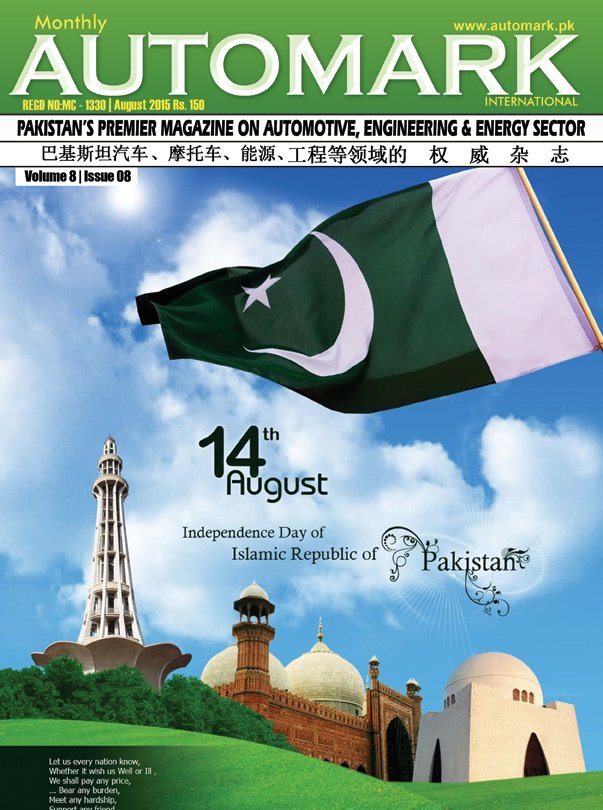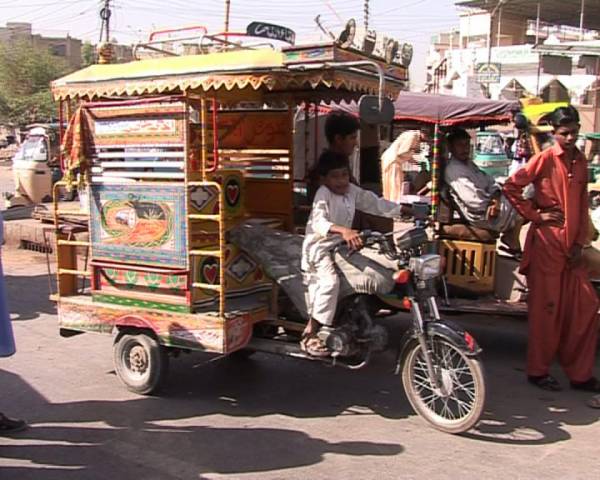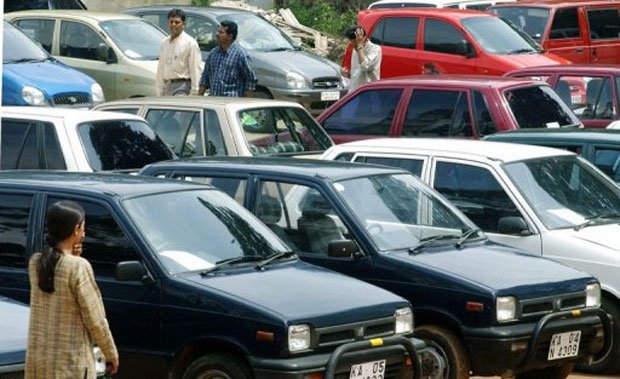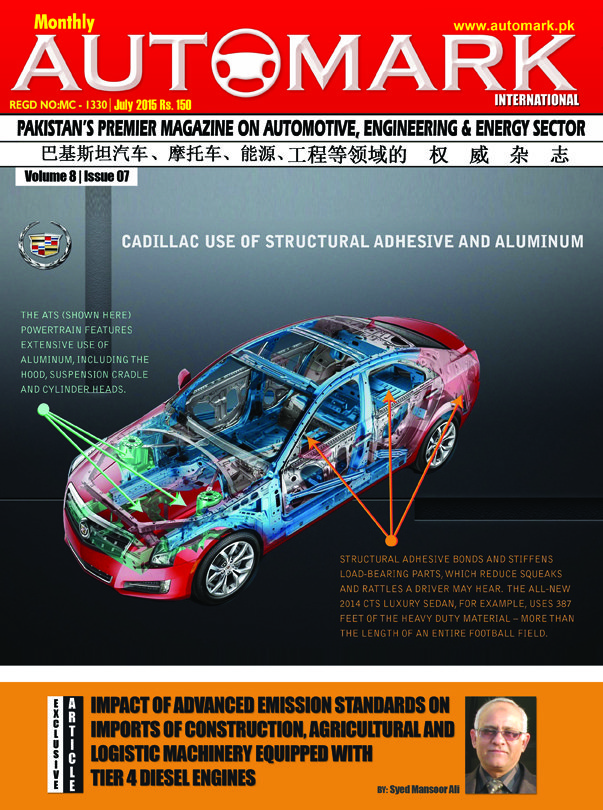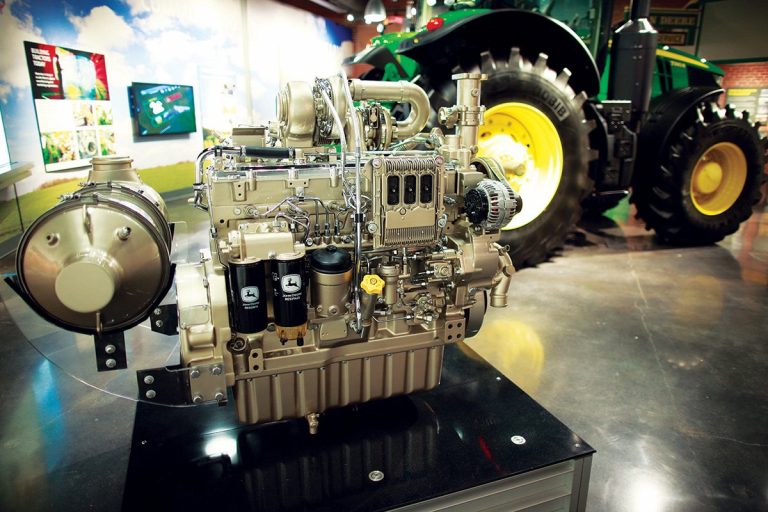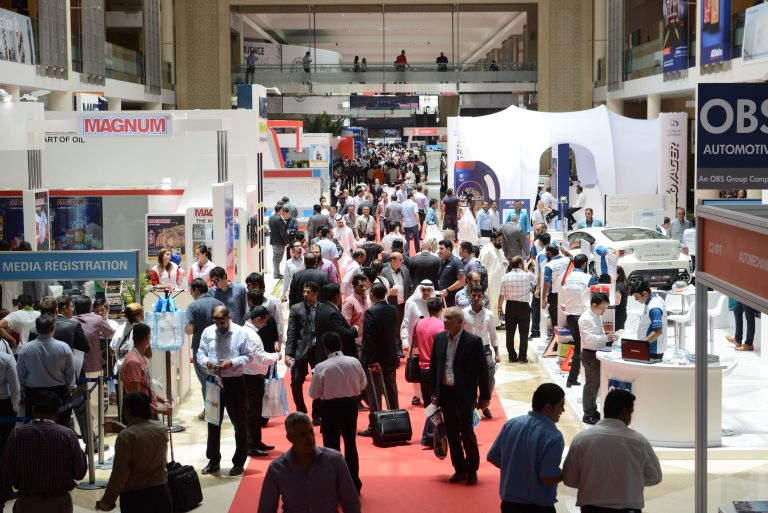Yamaha Pakistan launches YBR125G motorcycle
Pakistan Yamaha Motor on Saturday launched the YBR-125G sports model at the PC Hotel, Lahore at a price tag of Rs 1,32,400. It will be available at select authorised Yamaha dealerships within next few days.
Already winning the motorbike market by recommencing their assembly here in Pakistan, Yamaha received huge appreciation with the launch of their YBR-125. In records where a country has more than 1.7 million bikes on road due to lack of proper transportation system turn out to be a great opportunity for bike assemblers.
Keep in mind the increasing demand due to increasing population, Yamaha has launched another new model YBR G. With soon to be launched in Karachi too, the bike sis no doubt a beauty.
The arrogant look it gives from the front proving that it has the capability to eat up almost most of the bikes on roads; Yamaha surely has made another huge step in the motorbike market.
With the already success of the previous model launched by them, Yamaha is confident enough that the all new YBR G is going to have a sales figure higher than the previous model.
Good times await you with the new Yamaha YBR125G, a 125cc 4 stroke OHC engine motorcycle designed specially for on road convenience and off road adventure.
In relation to the price it is true that Yamaha is not at all exploiting the customers and providing them the best price till now. Also the latest model is set to have a price tag of 132400 PKR.
Pak Suzuki Motors introducing back CNG fitted cars in Pakistan by next few months
It has been largely believed that the government banned installation of CNG kits in zero meter cars due to shortage of compressed natural gas. The shortage of CNG was seen largely because of the increasing prices of oil and people therefore opting for alternates. The unavailability of CNG due to the huge increase in demand forced the government to finally ban CNG kits in zero meter cars.
Pakistani automakers had stopped booking of CNG versions of Mehran, Alto, Bolan, Coure and Corolla when government banned imports of CNG kits and cylinders in January-2012.
Suzuki on the other hand has been trying to lift this ban and through sources it has been revealed that the automaker has been able to convince the government. To all those out there, it’s a good news as Suzuki is going to start providing CNG kits in their zero meter vehicles. Suzuki is the one who is going to benefit the most out of it as compared to Toyota and Honda for obvious reasons.
Through sources it has been revealed that Suzuki is going to start installing CNG kits in Mehran which will later be followed by Cultus. About the Wagon R, Its showed that it’s not going to be provided anytime soon but you never know when there is a change of plan by the automaker.
The allowance of CNG kits to be installed in zero meter Suzuki cars is a double-edged knife, one showing that CNG is going to be available whereas the other edge gives a hint of increasing oil prices, not in the international market but in Pakistan only.
The market sources said that consumers, who used to rely on factory fitted CNG vehicle, would now feel happy after the government decision to allow car assemblers to install company fitted CNG kits in cars, like CNG Mehran.
Please discuss your views on lifting this ban by the government and share your thoughts of what can be done by the government in this matter.
Motorcycle Rickshaws banned in Sindh once again
Transport system has to be improved especially for citizens of Karachi
The Sindh High Court has once again banned motorcycle rickshaw in the sindh, the news is not new. Ban on Qingqi/motorcycle rickshaw has been so causal; now the topic seems to be boring.
Motorcycle rickshaws are found in large population in major cities of Pakistan such as Karachi and Lahore. Interesting thing about motorcycle rickshaw is that they are not being registered like other proper public transport vehicles. Being unregistered means that they don’t have any proper records with the government and which also proves that they don’t have laws to stop them.
Travelling in a motorcycle rickshaw is nothing but just being selfish to yourself and the society. Have you ever noticed that these Qingqis create huge amounts of noise and air pollution? We are already deprived of fresh air and then these Qingqis add up to more. The seats you get to sit on are nothing but a source of pain. Not only this I would also add up that there is no safety for the passengers, at least for the ones who are sitting at the back side of it. If a car behind you has fail brakes, you’re nothing but dead.
Any educated individual is not going to have issues with Qingqis. The issue is not with the type of transport but the issue is with the whole transport system. There must be some regulation on them. It’s a norm of our country that we let things get out of control and then start planning and controlling, why not just start controlling from the very beginning.
Transport system has to be improved especially for citizens of Karachi. The transport mafia should be handled and strict actions must be taken against them but unfortunately the government falls ill with a one day transport strike.
SHC must think about the class which travels in these motorcycle rickshaws is, instead of banning them, these Qingqis should get registered as none of them is. Not only this but there should be a limit and a proper stand for Qingqis because currently to be honest they are more than they are actually needed.
Foreign automakers plan to enter local market on rising deman
Pakistan’s car market has been dominated by Japanese automakers for decades, but a mini-economic revival looks set to attract new players from Europe and Korea into the mix.
Despite heavy taxation on imported vehicles, enthusiasm for owning a car in Pakistan has remained undented – thanks in part to underdeveloped public transport in the country’s sprawling cities, but also the social status it brings.
Toyota, Suzuki and Honda car assembly plants already work around the clock in Karachi and Lahore – yet customers can still wait for up to four months for new vehicles to be delivered.
Now demand for cars in the country is accelerating even more quickly, as economic growth has reached its fastest pace since 2008 while renewed investor confidence and easing inflation have spurred consumer spending.
Keen to cash in, a delegation from German auto giant Volkswagen visited the country in recent weeks, according to Pakistani officials and German diplomats.
Miftah Ismail, the chairman of Pakistan Board of Investment who took part in the talks, said Volkswagen was not the only company expressing an interest.
“There are a number of other companies from (South) Korea and Europe that we are talking to who are thinking of setting up assembly plants in Pakistan,” he said, without naming the firms.
US and European cars dominated Pakistan’s roads in the early years after it gained independence from Britain in 1947.
But fuel prices made their compact, efficient Japanese rivals more popular and from the 1960s onwards manufacturers like Toyota, Suzuki and Honda gained a stranglehold on the market.
Italy’s Fiat made a brief foray in the 1990s, while South Korea’s Hyundai as well as Daewoo-owned Chevrolet tried – and failed – to gain a foothold in the 2000s before the financial crisis forced them to exit.
Because Pakistan charges heavy duties on imported cars less than three years old, Japanese companies with in-country assembly operations can set prices significantly above the regional average.
The bottom-of-the-range Suzuki Mehran costs the equivalent of $6,300 in Pakistan but sells for around $3,900 in neighbouring India. The most popular Corolla 1.3 sedan starts at Rs1.6 million ($16,000), but buyers have to wait months or pay $1,500 for prompt delivery.
The news that Volkswagen was exploring options to enter the Pakistani market has excited car enthusiasts, who are tired of high prices and limited choices.
“I think it is a great idea because Volkswagen cars are value for money and reliability,” said Romano Karim, a fan of the classic Volkswagen Beetles from the 60s and 70s that can often be seen on Pakistan’s roads.
Haji Mohammed Shahzad, chairman of the All Pakistan Motor Dealers Association, added that having Volkswagen in the market would help drive costs down.
“The monopoly of big three could be broken if Volkswagen produces at least 20,000-25,000 cars annually,” Shahzad said.
Global auto giants are attracted by Pakistan’s booming economy, which the International Monetary Fund predicts will grow by 4.5 per cent in the next financial year.
Investor confidence in the medium-sized economy of $232 billion has improved since a new business-friendly government led by Nawaz Sharif took power in 2013, with Karachi’s share market among the world’s top 10 performers in the past year.
The country is also undergoing a major construction boom driven by Chinese investment after President Xi Jinping visited Islamabad in April to unveil a $46 billion investment plan known as the China-Pakistan Economic Corridor.
Car sales have also boomed thanks to the growth of car leasing and financing facilities. Sales in the 11 months to May this year rose 30 per cent from a year earlier, according to Pakistan Automotive Manufacturers Association.
Next Toyota Prius Plug-In Hybrid To Have 50 To 55 KM Of Range

Cars with plugs have been on sale since December 2010, and a second generation will start arriving next year.
But while long-range battery-electric cars–the 2017 Chevrolet Bolt EV and an all-new 2017 Nissan Leaf–grab attention, another vehicle on the way could be equally important.
That’s the second generation of the Toyota Prius Plug-in Hybrid.
In general, journalists dislike anonymously sourced stories. They don’t let readers evaluate the source, and they offer less accountability if the information proves to be incorrect.
Green Car Reports publishes such stories only with great care–but this is one of the times we’re willing to do so.
Within the last month, we heard from an industry source that the next Toyota Prius Plug-In Hybrid will have “30 to 35 miles” of rated battery range.

If that’s true, it will change the game significantly.
Our source is an executive in the auto industry who’s deeply familiar with the current and future universe of battery-electric and plug-in hybrid vehicles.
We trust that source, and are satisfied with the source’s explanation of how the Toyota information was obtained.
The all-new, fourth-generation Toyota Prius hybrid is expected to launch within the next few months, as a 2016 model.
Toyota itself has said that the plug-in hybrid version of the next Prius will lag the conventional hybrid model by roughly a year.
Production of the current 2015 Toyota Prius Plug-In Hybrid ended last month.

But while that car garnered sales of more than 40,000 units over four years, it was hardly beloved by plug-in car advocates.
The plug-in Prius had just 11 miles of all-electric range, and its battery and motor were marginal enough that it couldn’t complete those 11 miles on the relatively gentle EPA test cycle without switching on its engine after 6 miles.
Its 11-mile range, in fact, was the lowest of any car with a plug sold in North America.
Despite that distinction, the plug-in Prius was awarded single-occupant carpool-lane access in California. Still, Toyota heard the grumbling.
“We have been listening very carefully to Prius [plug-in] owners over the past two years,” said Satoshi Ogiso, Toyota’s chief engineer and the man in charge of developing the next range of Prius models, to reporters in August 2013.
“[We] are considering their request for additional all-electric range,” he concluded.

And if the next Prius Plug-In gets that 30-to-35-mile range rating, it will go from the lowest electric range of any car with a plug to the second-highest range of any plug-in hybrid known today.
Its range will exceed those of the Ford C-Max and Fusion Energis, the Hyundai Sonata Hybrid and future Kia Optima![]() Hybrid, and the now-withdrawn Honda Accord Hybrid.
Hybrid, and the now-withdrawn Honda Accord Hybrid.
It’ll also surely exceed the rated ranges of luxury plug-in hybrid SUVs coming this year from BMW, Mercedes-Benz, and Volvo, with Audi and Mitsubishi piling in next year as well.
And it’ll get significantly closer to the all-new 2016 Chevrolet Volt, which GM says will receive a range rating of at least 50 miles.
It remains to be seen whether Toyota aims to sell as many Prius plug-ins it can, or simply offer the car to get specific credits under California’s zero-emission vehicle mandate.
But the all-new Prius is expected to be better-looking, and sportier, and offer improved driving dynamics, while retaining the Toyota reputation for high quality and reliability.
Add to that an EPA fuel-economy rating of 50 mpg or more, plus 30 miles or more of electric range, and you’ve got what sounds like a very competitive new entry in the plug-in car world.
source:greencarreports
EID MUBARUK TO ALL READERS AND VIEWERS FROM AUTOMARK
EID MUBARUK TO ALL READERS AND VIEWERS FROM AUTOMARK
IMPACT OF ADVANCED EMISSION STANDARDS ON IMPORTS OF CONSTRUCTION, AGRICULTURAL AND LOGISTIC MACHINERY EQUIPPED WITH TIER 4 DIESEL ENGINES
It is imperative to develop understanding towards the international emission control standards applied to diesel engines to avoid making erroneous mistakes of importing machines equipped with sophisticated diesel engine emission control mechanism. These machines will not operate in Pakistan due to sophisticated modifications in diesel engines.
Every year, Pakistan imports new and used construction, agricultural, and logistic machines manufactured in Europe and the USA. There is a fear that due to our non-familiarization with emission standards, serious mistakes might occur in the procurement and lead to huge capital loss, while machines will remain inoperative due to unavailability of ultra-low diesel fuel and other components to support its operation.
The chance of this mistake is high towards used machinery because lack of government control exists to monitor this activity. There is a dire need to put in place a restriction to import used machines equipped with Tier 4 diesel engines, otherwise importers will suffer huge financial losses. Although the industry should gain thorough understanding of current emission standards, the chances of importing new machines with the same technical qualifications is extremely low since manufacturers have restricted the sale of Tier 4 engines (Phased-in over the period of 2008-2015) to Pakistan for obvious reasons.
This article is a sincere attempt to develop a cursory understanding about EPA standards for non-road diesel engines, and to describe reasons for adopting such standards for common understanding. This will help young engineers and industry to be aware that diesel engines with emission standards Tier 4 and above could not be operated in Pakistan due to the enumerated reasons.
There was a time when engine manufacturers’ focus was to make engine fuel efficient as it used to be the salient selling feature of the machine. Since the past two decades there is a significant shift in the approach from an exclusive focus to produce energy efficient diesel engines to address the air quality by neutralizing harmful effects of the exhaust gases coming out of machines after an exhaust stroke. These gases are Hydrocarbons (HC), Carbon Monoxide (CO), Oxides of Nitrogen (NOx), and particulate matter (PM) which is an outcome of combustion and non-combustion (small portion of unburnt gases) in the cylinder during the power stroke of the engine. These gases are dangerously harmful to human health. It is estimated that several thousand people in the world every year die of various diseases (human asthma, allergies, and cancer) caused by these gases (molecules of nitrogen oxide NOx and Hydrocarbons HC).
The Environmental Protection Agency of the USA started working (1999-2010) on establishing the standards for diesel engine manufacturers to minimize the adverse effects of engine emissions. The standards set up depended on various tiers which were started from simple to complicated technology to ensure reduction in emission, and elimination of harmful effects of gases. Tier 1-3 stage did not limit the Sulphur content percentage to an extremely low level (on emissions side the differences between Tier 3 and Tier 0 engines are the nitrogen oxide NOx and Hydrocarbons HC molecules production level), but adopted various methodologies like exhaust gas recirculation (reduces nitrogen oxide emissions), use of intercoolers, and advance fuel system to bring a combination of both, which was reduction in fuel intake and reduction in the discharge of harmful gases into the environment.
In the past we have not paid any attention on these emission standards for diesel engines and it kept gradually moving up in terms of advancement. The reason for our ignorance was that these levels (Tier 1-3) were not affecting us or rather putting any restrictions in terms of input (local diesel) as applied by Tier 4 level, instead these standards were supporting the sales force on the pretext that engines have become more fuel efficient. We never tried to research on these standards to understand the upcoming impact on the construction and logistic machinery import in Pakistan after the implementation of Tier 4. We did not realize that it is not just making engine fuel efficient, but the treatment of emission gases to minimize its harmful effects before being released in the environment.
The technology introduced in the Tier 4 has the prime objective to reduce the harmful contents from the emission gases to provide better environment to human life. To accomplish this task, the EPA has instructed the industry to minimize the Sulphur content in diesel fuel to an ultra-low level (less than 15 parts per- million- sulphur). Furthermore, a new Sulphur-sensitive technology in Tier 4 engines was introduced like as catalytic particulate filters and NOx absorbers.
As a result, for our country where diesel contains high Sulphur, any machinery having diesel engine with emission standards Tier 4/Euro 4 and above could not be operated in Pakistan due to the following reasons:
1. Unavailability of Ultra low sulphur diesel
2. Unavailability of AdBlue (pure water and urea mixture).
(It is standardised as ISO 22241 is an aqueous urea solution made with 32.5% high-purity urea (AUS 32) and 67.5% deionized water)
3. Unavailability of diesel particulate filter.
(It is a device designed to remove diesel particulate matter or soot from the exhaust gas of a diesel engine)
4. Use of Low ash engine oil.
We know that in Pakistan, Sulphur levels are high (1%) in comparison with those in Europe (0.03%). We import cheap diesel that already contains high percentage of diesel and our refineries reduce the sulphur contents to some extent, however the output remains much higher to meet the standards of “ultra-low sulphur diesel”.
The AdBlue is used to treat the emissions of NOx (nitrogen oxides) produced after post-combustion stage in diesel vehicles. This process is called Selective Catalytic Reduction (SCR) which allows reducing the emissions of NOx (nitrogen oxides). This technology requires the use of a reagent called AdBlue. This chemical is not available in Pakistan.
The diesel particulate filter is a special type of filter to arrest harmful diesel exhaust soot particles. Even if we start importing this filter, it will not work due to frequent blocking for reasons of quality of the fuel and the quality of the engine oil. Specificengine oil (low ash engine oil) is to be used; otherwise it can significantly add to the soot buildup in the filter.
Why the world is doing so? It is being done after getting to know that the exhaust gases coming out of diesel vehicles are causing serious health hazards leading to several thousand deaths every year. It is also one of the causes of acid rain affecting crop health. As an estimate, the annual emission reductions after replacement of full inventory of non-road diesel engines (Tier 4) will reduce 738,000 tons of Nox and 129,000 tons of PM from the environment preventing 12,000 premature deaths by 2030.
The incorporation of emission control technology (modified engine) is expected to add up in the equipment cost by 1-3%. Also, reducing Sulphur from diesel to attain 15ppm level would be 7 cents per gallon. The anticipated saving in the machine maintenance cost due to low Sulphur would offset 4 cents per gallons.
There is no huge increase in the cost of the machinery, but the benefits in terms of making the air cleaner is huge with regard to human health and its overall impact on the globe.
Our neighbour India has already attained Tier 3 emission level (under 50 HP in October 2010 and above 50HP in October 2012) considering its impact on the environment and possible deprivation from export market and simultaneous import of modern machines.
In Pakistan we are at Tier 0 level, and so far we are not even introduced to this big change in the making. Despite the fact that it’s an important subject (environment) to be looked into by the government, we are stuck with complications to decide if the old federal legislation should be used (Laws are still valid), or the provinces should make their own laws as environment has become the provincial subject after the 18th amendment in 2012.
The other provinces have not yet enacted new environment legislation after the 18th amendment. In reality whatever progress was made on the Federal level prior to the 18th amendment is getting stale, while the provinces don’t have the capability to do some legislative/regulatory work in the field of environment.
Most of our issues are our own making which could be resolved through political commitment.
References:
https://www.dieselnet.com/standards/us/nonroad.php
www.epa.gov/otaq/nonroad-diesel.htm
United States environmental Protection Agency (2014), office of Transportation and Air quality, EPA-420-F-14-002, USA:
United States environmental Protection Agency (1998), air and radiation, EPA 420-F-98-034, USA.
BY
Syed Mansoor Ali
Published in Monthly AutoMark Magazine’s July-2015 printed edition.
New milestone for Automechanika Dubai as trade visitors to three-day event in 2015 pass 30,000 mark
Middle East and Africa’s largest automotive aftermarket trade show attracts 30,835 visitors from 130 countries
Dubai, UAE: The unrelenting momentum of Automechanika Dubai continues to gather pace with no signs of slowing down, as visitors to the three-day event passed the 30,000 mark for the first time in its illustrious 13 year history.
A total of 30,835 trade buyers from 130 countries passed through the 2015 edition of the Middle East and Africa’s largest automotive aftermarket trade fair, a seven per cent increase over the previous year, according to organiser Messe Frankfurt Middle East.
With 1,889 exhibitors from 59 countries occupying 17 per cent more space than in 2014, Automechanika Dubai 2015 concluded on 4 June at the Dubai International Convention and Exhibition Centre with more international and local representation than ever before.
The increasing global interest in the wider region’s automotive aftermarket also comes as Dubai Customs released figures showing Dubai’s trade for auto parts and accessories was valued at US$12 billion in 2014, 10 per cent more than in 2013.
That figure includes imports of auto parts, accessories, tyres, and engine components worth US$7 billion last year, while exports and re-exports were worth US$5 billion, reinforcing Dubai’s premier status as a major liaison between Asian, European and North American manufacturing countries and consuming regional markets.
Ahmed Pauwels, CEO of Messe Frankfurt Middle East, said: “The double-digit growth of Dubai’s auto parts trade underlines the Emirate’s important role as a key gateway to emerging markets throughout the world.”
“This growth goes hand-in-hand with Automechanika Dubai, which is the wider region’s only dedicated trade platform where the entire global automotive aftermarket community converges for three busy days to expand their presence and business networks not only in the Middle East and Africa, but also the subcontinent and CIS.”
New product launches, partnerships, distribution agreements, and manufacturing facility announcements by leading global majors and local players alike were the norm at Automechanika Dubai 2015.
At the forefront of new announcements was the show’s Headline Sponsor and UAE-based ENOC, which opened a 5,000sqm lubricants and grease manufacturing plant in Dubai to complement its existing facility in Fujairah.
According to Mohammed El Sadek, Director of ENOC’s Lubricant Division, the two plants have a total production capacity of 300,000 metric tonnes annually, most of which is exported to more than 60 countries.
“The UAE is the Middle East’s largest hub for manufacturing of lubricants, manufacturing close to 1.5 million metric tonnes annually,” said El Sadek. “Only 200,000mt is used domestically, so there’s around 1.3 million metric tonnes exported throughout the region as well as into Asia, South East Asia, Africa, and the sub-continent.
“There is huge potential to build on this business especially for export and Automechanika Dubai gives us the platform to expand into new markets where we are not yet present,” added El Sadek.
“If we look at the mix of visitors to Automechanika Dubai, we are looking at more than 100 countries, and a lot of these countries we still don’t have business in so it’s important to be here.”
Automechanika Dubai focuses on six product sections of Parts & Components and Systems and Electronics (1,340 exhibitors in 2015), Tyres & Batteries (190 exhibitors), Accessories & Tuning (166 exhibitors), Repair & Maintenance (109 exhibitors), and Service Station & Car Wash (84 exhibitors).
The largest section, Parts & Components and Systems & Electronics, spanned more than 41,000sqm of exhibition space alone, and was packed with biggest names of the international automotive aftermarket.
Among these was Belgian-headquartered WABCO, a world-leading supplier of electronic braking, stability, suspension and transmission automation systems for heavy duty commercial vehicles.
Sherif El-Sheikh, Regional Leader for the Middle East and Africa, WABCO Trailer Systems, Aftermarket and Off-Highway Division, said the region presented major growth opportunities for the automotive sector.
“The Middle East continues to close the gap to advanced safety and efficiency technologies more common in developed markets,” said El-Sheikh. “Therefore, we see it as a glass half full because it means there are more opportunities to introduce the latest innovations that have already been around in mature markets.”
“Now is the perfect time to do business in the Middle East and Africa and most of the main players in the commercial vehicle industry are exhibiting at Automechanika Dubai showing off their capabilities. There’s a good reason behind that and that’s because many industry experts are expecting this market to grow for many years to come.”
Among the more innovative product launches at Automechanika Dubai 2015 was Irish company No-H2O’s waterless carwash solutions. No-H2O signed a partnership agreement with Central Trading Company (CTC) – part of the Al Rostamani Group – at Automechanika Dubai. The deal, which is expected to exceed AED10 million, will see CTC take on the role of master franchisee and act as the exclusive distributor for No-H2O in the UAE.
“We’re revolutionising the UAE car market by introducing No-H2O and we will continue to satisfy our valuable customers and exceed their expectations,” said Mohammed Aqel, General Manager of Central Trading Company.
“This region is faced with a lot of water consumption issues and No-H2O supports the growing need to preserve water and reduce waste. All No-H2O products are biodegradable and eco-friendly, using the latest waterless technology on the market today. No-H2O is also the only product of its kind approved for use on commercial aircraft such as Boeing and Airbus, so it’s highly accredited.”
Automechanika Dubai is the definitive must-attend trade show for the wider region’s automotive aftermarket, and has in recent years attracted a growing number of African visitors looking for suppliers of genuine parts, accessories, and components.
More than 3,000 trade buyers from the world’s second largest continent stopped by Automechanika Dubai 2015, including Nigerian Engineer Tunde Koiki, CEO of Teekay Service Centre, who has visited the show for the past six years.
“Every year there’s something I want to achieve at Automechanika Dubai,” said Koiki. “This year my target is to meet manufacturers and establish partnerships in Nigeria where there is a strong demand right now for genuine parts.
“I can meet suppliers one-on-one and can and buy from them directly. Having genuine parts sourced at Automechanika Dubai has helped my business grow so far, and I’m sure that will be the same for any Nigerian car parts dealer.”
As the dust settles on another record-breaking show, the wheels are already in motion for Automechanika Dubai 2016. The 14th edition will take place from 8-10 May 2016 at the Dubai International Convention and Exhibition Centre, a month earlier than its usual dates to accommodate the Holy month of Ramadan.
